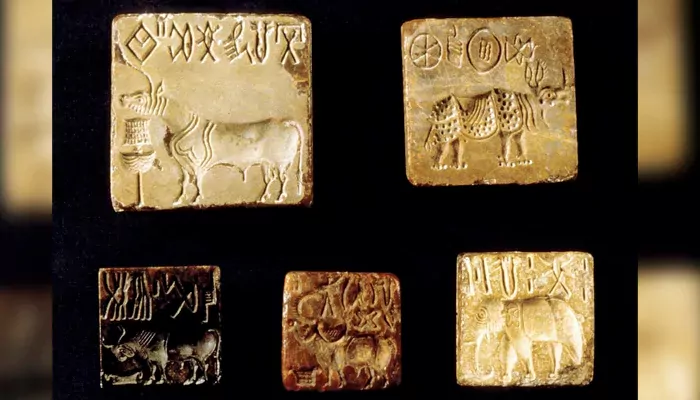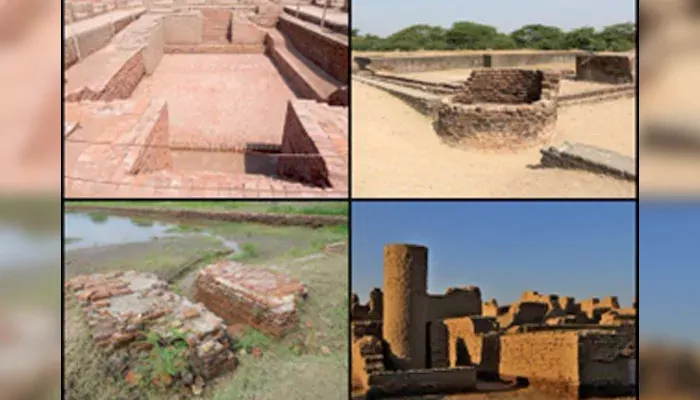
What could India, and the world, have looked like if one of the world's oldest urban civilizations had continued to thrive?
The more we uncover about the Indus Valley Civilization, the more it feels like a civilization far ahead of its time. And then, just like that, it vanished. No one knows exactly how or why; it simply... vanished. But what if it hadn’t? What if the people of Harappa and Mohenjo-daro had held on and kept building? What would India, and also the world, look like today? Would history books tell a different story?
So, in this piece, we step into an alternate timeline where the Indus Valley never collapsed.
The Indus Valley Civilization, spanning roughly from 3300 to 1300 BCE, was one of antiquity’s most impressive societies, and yet remains one of the least understood. Centered around the Indus River basin and stretching deep into present-day Pakistan and northwest India, its cities rivaled those of Egypt and Mesopotamia.
The streets in Mohenjo-daro and Harappa were meticulously laid out in grid patterns, their homes were made from standardized bricks, and their sanitation systems were engineered with an eye toward public health. The famed “Great Bath” of Mohenjo-daro, possibly a site of ritual cleansing or social gathering, stands as an emblem of civic design and communal life.
Indus valley civilization pic.twitter.com/Z11Bzm8ayE
— UPSC & PCS NOTES (@UPSC_EDU) July 19, 2025
(Credit: UPSC & PCS NOTES)
Unlike the ziggurats of Mesopotamia or Egypt’s pyramids, the Indus left behind no palaces or grand temples, and surprisingly little evidence of warfare. It was a mercantile society, and was very curious about the world beyond its borders. Indus seals have been unearthed as far as Mesopotamia, hinting at a trading network that stretched across the ancient world. And then, somewhere around 1900 BCE, this civilization began to unravel.
So, what went wrong? Historians and archaeologists offer several theories. The leading culprit is climate change, particularly the weakening of the monsoon, which slowly desiccated once-thriving rivers like the Ghaggar-Hakra (often associated with the mythic Sarasvati). Sediment studies from the Arabian Sea indicate that rainfall patterns shifted dramatically around 2500 BCE. Agriculture withered, and rivers changed course. And just like that, the lifeblood of the civilization simply ebbed away.
Some suggest tectonic activity played a role, or that over-farming exhausted the soil. Long-distance trade (especially with Mesopotamia) may have declined, further isolating the IVC. Earlier narratives of an “Aryan invasion” have largely been discredited; skeletal remains show little evidence of conflict or conquest.

But what if the people of the Indus Valley had adapted? Their engineers, after all, had already demonstrated an acute understanding of water management; Dholavira’s reservoirs and check dams remain marvels even today. Had they scaled these innovations to respond to drought? Had they shifted trade routes, diversified economies, and formed new alliances?
Had the Indus Valley Civilization endured beyond 1900 BCE, India’s historical arc might have looked radically different. By 1500 BCE, cities like Mohenjo-daro might have evolved into massive cosmopolitan centers, becoming pre-modern equivalents of Rome or Athens, with populations soaring beyond 100,000. A unified script, potentially a precursor to Brahmi, could have emerged, standardizing communication across the subcontinent long before Ashoka's edicts in the 3rd century BCE.
Upinder Singh, among India’s foremost historians, has pointed to the IVC’s striking standardization in weights and measures, a level of uniformity suggestive of shared governance, possibly even a nascent federation of city-states. Instead of fragmented tribal or monarchic rule, the subcontinent might have nurtured a system balancing local autonomy with regional cohesion.
Technologically, the seeds of an early industrial revolution were already present. The IVC had mastered metallurgy, crafted bronze tools with remarkable sophistication, and was among the first to cultivate and spin cotton. Had these innovations scaled, India might have become a manufacturing hub by the first millennium BCE, exporting cotton, ceramics, and bronzeware across Asia and Africa.
Even more radically, the civilization’s social fabric (seemingly less hierarchical than the Vedic order that followed) might have birthed a culture where power flowed from guilds and merchant councils, not priests and warriors. Jonathan Mark Kenoyer, a leading archaeologist, has long argued that the IVC’s lack of palatial architecture suggests a society organized around commerce rather than conquest.
A 4000 years old painted pottery from Indus Valley Civilization -
— Dr. M.F. Khan (@Dr_TheHistories) August 16, 2024
The Indus Valley Civilisation was a Bronze Age civilisation in the northwestern regions of South Asia, lasting from 3300-1300 BC, and in its mature form from 2600-1900 BC. Together with ancient Egypt and… pic.twitter.com/VT81Pmm50e
(Credit: Dr. M.F. Khan)
This alternative South Asia might have looked less like a patchwork of caste and kingdom, and more like a confederation of literate and technologically advanced city-states.
The survival of the IVC would not have just rewritten India’s story. It would have reshaped global history.
Its trade routes, already brushing against the edges of Mesopotamia by 2500 BCE, could have expanded across the Arabian Sea, reaching the Horn of Africa, Southeast Asia, and even southern China. With ports like Lothal, the IVC was poised for maritime power, perhaps centuries before Phoenician or Greek seafarers mapped the Mediterranean.
Archaeologist Jane McIntosh has argued that the IVC was far more globally connected than most give it credit for. Seals found in Bahrain and Oman support this view. Had its maritime network matured, India might have become the economic center of the ancient world long before the Silk Road stitched together East and West.
Culturally, the IVC’s aesthetic (embodied by the elegant bronze “Dancing Girl” or its abstract seals) might have shaped a pan-Asian visual tradition. Religious practices, blending proto-Hindu fertility symbols with incoming Vedic ideas, could have given rise to a more inclusive, less hierarchical spirituality. Zoroastrianism, early Buddhism, and even pre-Christian mysticism might have drawn from this blended canon.
AO THROWBACK - A society still silent and secreted beneath the earth of the Himalayas the earliest civilization associated with Hindu/Indian art history is the Indus Valley Civilization. pic.twitter.com/8sE78OzA3E
— Ancient Origins (@ancientorigins) July 16, 2025
(Credit: Ancient Origins)
We can imagine Greek architects borrowing Indus drainage techniques, African merchants wrapping themselves in Indian cotton in 1000 BCE, or a global antiquity with India at its spiritual and commercial heart.
All of this, of course, remains in the realm of speculation. However, it’s not an empty fantasy.
What the story of the Indus Valley teaches us (both in its brilliance and in its collapse) is how deeply human civilization depends on its environment, and how fragile our greatest achievements can be.
Yet the IVC also leaves us with inspiration. Its water systems offer blueprints for drought-prone regions. Its urban layouts still outshine many of our chaotic modern cities. Its apparent egalitarianism, if confirmed, stands as a counterpoint to the rigid hierarchies that followed.
Above all, the IVC shows that pragmatic and cooperative societies existed long before empires were built on blood.
Walk through the remains of Mohenjo-daro today, and it’s easy to forget that you’re standing amid a city that predated Homer by a thousand years. And maybe, you may hear a question in your own mind. What if? What if they had stayed? What if the river hadn’t failed them? Well, we can’t change what happened. But we can listen to the silence of that ancient city. And we can carry its wisdom forward.